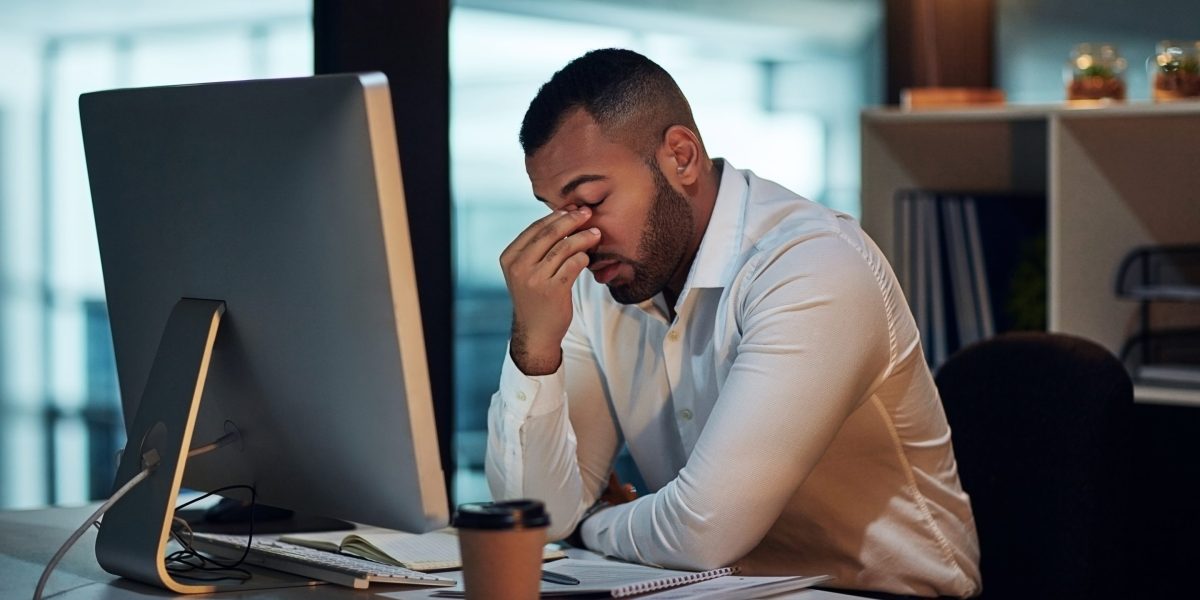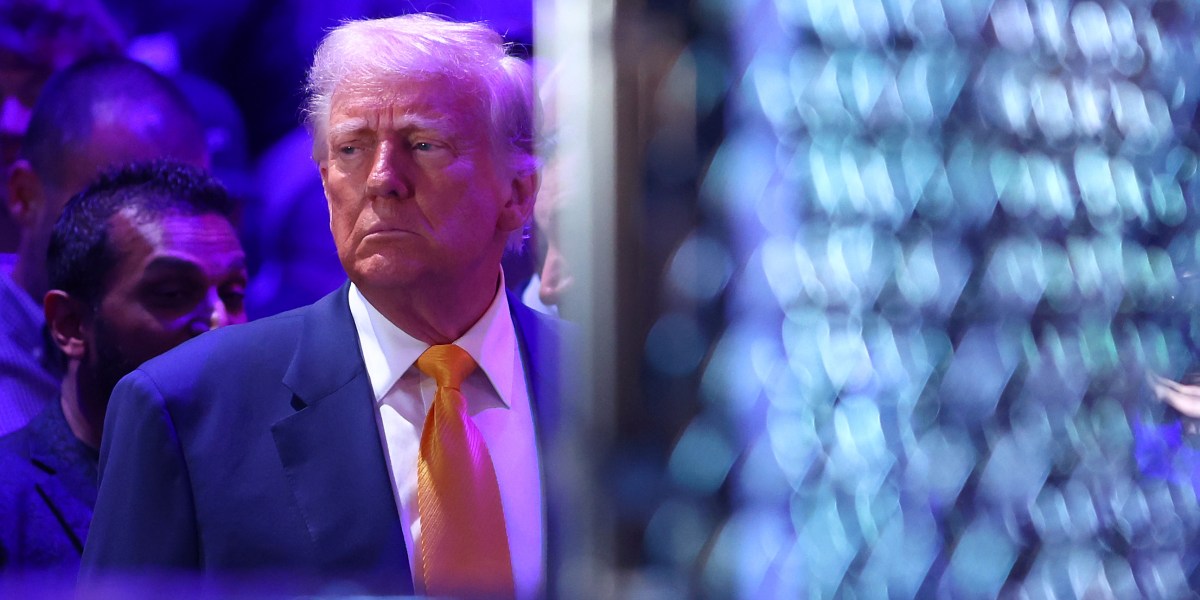President Donald Trump pledged he will still apply tariffs to phones, computers and popular consumer electronics, downplaying a weekend exemption as a procedural step in his overall push to remake US trade.
The late Friday reprieve — exempting a range of popular electronics from 125% tariffs on China and a 10% flat rate around the globe — is temporary and a procedural step in the longstanding plan to apply a different, specific levy to the sector. Trump doubled down on the plan Sunday.
“NOBODY is getting ‘off the hook,’” Trump said in a social media post Sunday, issued shortly after he finished his Sunday golf game. The exempted products are “just moving to a different Tariff ‘bucket’” and the administration will be “taking a look at Semiconductors and the WHOLE ELECTRONICS SUPPLY CHAIN,” he added.
Taken together, the comments from Trump and two of his top trade chiefs Sunday are a stark reminder of the scope of his planned tariff onslaught. Still, the maneuver means weeks, maybe months, without extra tariffs on the array of phones and computers before the specific sectoral tariff on electronics kicks in. It also opens a window for companies and lobbyists to push for different parameters and exclusions.
The exemptions were published in a US Customs and Border Protection document late Friday, and are a step to shift those products ultimately to a different levy, which Trump has long threatened for semiconductors, without specifying the scope. Trump already carved out those sectors he plans to specifically target from being hit by both those levies and the across-the-board ones on countries he enacted this month in his “Liberation Day” announcement that triggered a market selloff.
The pause Friday was nonetheless a temporary victory for Apple Inc. and other manufacturers who rely on Chinese manufacturing in particular, and the country’s government had welcomed the exemptions and urged Trump to go further.
Read More: Apple Was on Brink of Crisis Before Tariff Concession From Trump
“This is a small step by the US toward correcting its wrongful action of unilateral ‘reciprocal tariffs’”, the Chinese Ministry of Commerce said in a statement posted on its official WeChat account on Sunday. The ministry urged the US to “take a big stride in completely abolishing the wrongful action, and return to the correct path of resolving differences through equal dialog based on mutual respect.”
But US Commerce Secretary Howard Lutnick and other administration officials said Sunday it was only a pause before they’re shifted to different levies, though those will almost certainly be lower than the 125% rate on China that Trump set last week, and perhaps higher than the 10% rate charged on other countries.
“All those products are going to come under semiconductors, and they’re going to have a special focus-type of tariff to make sure that those products get reshored,” Lutnick said Sunday on ABC’s This Week,. “We can’t be relying on China for fundamental things that we need.”
Democratic Senator Elizabeth Warren said the chaos would hurt investment in the US.
“Investors will not invest in the United States when Donald Trump is playing red light green light with tariffs and saying, ‘oh, and for my special donors, you get a special exception,’” she said on CNN’s State of the Union.
Trump’s latest exemptions cover almost $390 billion in US imports based on official US 2024 trade statistics, including more than $101 billion from China, according to data compiled by Gerard DiPippo, associate director of the Rand China Research Center.
Semiconductor Tariffs To Come
The White House had long said it would not apply its country tariffs — 125% on China, 10% on nearly every other nation — to sectors that were going to get their own specific levies. Trump has already enacted those sector-specific tariffs for steel, aluminum and autos, while teeing up addition ones on auto parts and copper and pledging yet others on semiconductor chips, pharmaceutical drugs, lumber and maybe critical minerals.
The semiconductor tariffs are “coming in probably a month or two,” Lutnick said. He said a notice will be published in the federal registry this week related to semiconductors, but he didn’t elaborate.
US Trade Representative Jamieson Greer also pledged the products would face a different tariff.
“It’s not that they won’t be subject to tariffs geared at reshoring. They’ll just be under a different regime. It’s shifting from one bucket of tariffs to a different bucket of potential tariffs,” Greer said Sunday on Face the Nation with Margaret Brennan.
Trump on Saturday hinted at further developments on Monday.
“We’ll be very specific on Monday,” he told reporters on Air Force One. “We’re taking in a lot of money; as a country we’re taking in a lot of money.”
Friday’s exclusion was the first time that the Trump administration published a detailed list of what products it thinks fall under the umbrella of semiconductors, which are used in electronics products of all kinds. They are not required to apply the sectoral tariff to the same list but Lutnick indicated they would.
In some ways, Trump’s Friday exclusions were an announcement of the products that will be targeted be the sectoral tariff on “semiconductors,” which are used widely in all kinds of products. But the administration may yet adjust the scope.
It’s not clear what tariff rate the administration would apply semiconductors and products it covers under that tax, but they’ve been 25% so far on other industries. Those so-called Section 232 tariffs may prove more permanent than Trump’s country rates, which are based on a more vulnerable legal authority and which he’s said he will negotiate.
The tariff reprieve does not extend to a separate Trump levy on China — a 20% duty applied to pressure Beijing to crack down on fentanyl, including the shipment of precursor materials. Other previously existing levies, including those that predate Trump’s current term, also appear unaffected.
Trump, in his social media post Sunday, reiterated that the 20% rate still applies.
On China, “everyone pays at least the 20% and these particular components are being put through a separate process controlled by the Department of Commerce which is the 232,” Lutnick told ABC.
This story was originally featured on Fortune.com
Source link


 Entertainment8 years ago
Entertainment8 years ago
 Politics8 years ago
Politics8 years ago
 Entertainment8 years ago
Entertainment8 years ago
 Entertainment8 years ago
Entertainment8 years ago
 Tech8 years ago
Tech8 years ago
 Tech8 years ago
Tech8 years ago
 Tech8 years ago
Tech8 years ago
 Politics8 years ago
Politics8 years ago






